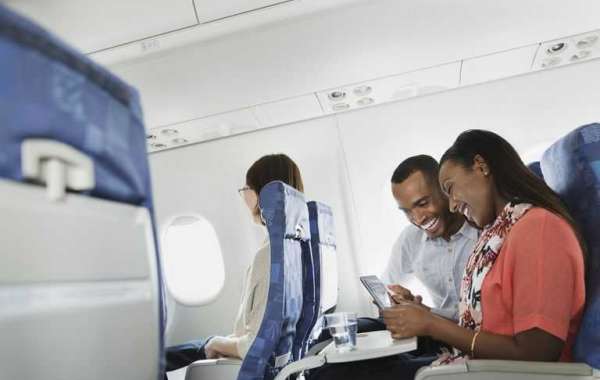The iPad has become the perfect traveling companion. Not only does it fit into your suitcase easier, it performs most tasks as good or even better than your standard laptop. It's great for reading, entertaining you with games or movies, updating Facebook, to keep in touch with loved ones. And using the free-to-download iMovie, you can even put together a vacation movie while you are on vacation.
But there are a few things you should know before you travel with your iPad.
Don't Risk Your iPad: Buy a Case
It's easy to forgo the case if you mostly use your iPad at home, but being on the go is another matter entirely. This is especially true if you plan on storing your iPad inside of your luggage. It's easy to forget that your iPad is hiding among your clothes or in a special outer pocket of your suitcase, and all it takes is a single metal object next to the iPad and the vibrations of a car, train or plane to result in a crack in the display.
Apple's Smart Case is not only smart because it can wake up the iPad when you open the flap, it's also smart because it is the best overall case for the iPad. It is a snug fit and creates enough protection to protect the iPad against the various bumps and drops that might happen during travel. Of course, if your vacation includes rafting, cycling or hiking, you may want
Learn How to Hook Into Your iPhone's Data Connection
Most of us don't have a 4G LTE connection for our iPad, and luckily, most of us don't need one. Apple has made it very simple to connect to your iPhone's data connection. This means you'll be able to use your iPad almost anywhere without the need for Wi-Fi.
You can tether your iPad to your iPhone by opening the Settings app on your iPhone and choosing "Personal Hotspot" from the menu. After you turn the Personal Hotspot on by flipping the switch at the top of the screen, you can enter a custom Wi-Fi password.
On your iPad, simply connect to this new network as you would any Wi-Fi network by going into Settings on the iPad and choosing Wi-Fi. After you tap the new Wi-Fi network you created on your iPhone, you will be prompted to enter the custom password.
Remember to Sign In (and Sign Out!) of Guest Wi-Fi
While tethering your iPad to your iPhone will get the job done, it will also use up the data allotted to your iPhone. And overage charges on data tend to be expensive, so it is important to use free Wi-Fi when it is available. Most hotels and coffee shops now have free Wi-Fi, and it tends to be faster than the internet connection you will get with your phone. You can also get Wi-Fi in many restaurants, malls, and other public spaces.
When you are signing into a guest network, you should remain on the Wi-Fi settings screen for several seconds after choosing the network. Many guest networks will pop up with a screen asking you to confirm their agreement, which usually contains wordage that protects them from being held responsible if you accidentally download malware or something similar.
If you skip this step, the Wi-Fi network may not actually let you connect to the Internet despite showing you signed into the network.
And just as important as signing into a guest Wi-Fi network is signing out of it. One not-so-uncommon scam used by those that might want to hack into a smartphone or tablet is to create a hotspot with the same name as a popular hotspot and no password. Because the iPad will try to automatically sign into "known" networks, the iPad may connect to this network without your knowledge.
You can sign out of guest networks by going back into the Wi-Fi screen and tapping the "i" with the circle around it next to the network name.
Next, tap "Forget This Network". This will keep your iPad from attempting to automatically connect to any WI-Fi network with the same name.
Protect Your iPad With a Passcode and Find My iPad
Your iPad may not need a passcode at home, but it's always a good idea on your iPad when you travel. And if you have a newer iPad with Touch ID, you can even use the fingerprint sensor to bypass the passcode. You can add a Passcode in the "Touch ID & Passcode" or "Passcode" section of settings. (The name will change based on whether or not your iPad supports Touch ID.
And just as important as a passcode is making sure Find My iPad is turned on in the Settings app. Find My iPad is located in the iCloud settings, and it should really be turned on at all times. The "Send Last Location" setting is also important. This will automatically send the location to Apple when the battery gets low, so if you leave your iPad somewhere and the battery drains, you can still find out where you left it so long as it can connect to the Internet.
But the big reason why turning on Find My iPad is a must isn't actually finding the iPad. It's the ability to put it even wipe the device from the remote. Lost mode is a special mode that not only locks the iPad, it allows you to write some text to be displayed on the screen. This allows you to write a "call if found" note on it.
Load the iPad Up Before You Leave
One key step in traveling that we often forget is to load the iPad up with games, books, movies, etc.
before we leave. This is especially true with movies, which can take a huge amount of data to stream, but if you are stuck on a plane without Wi-Fi, you'll thank yourself for downloading an extra book And if you are traveling with small kids, a game like Fruit Ninja can definitely come in handy. It certainly beats hearing "Are we there yet?" over and over again for a couple of hours.








